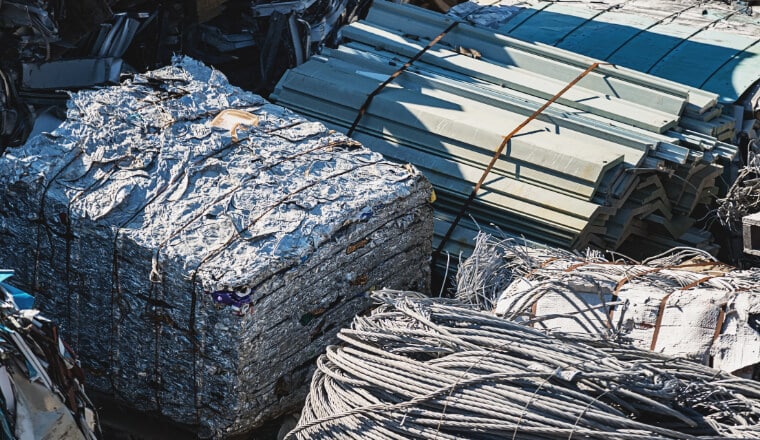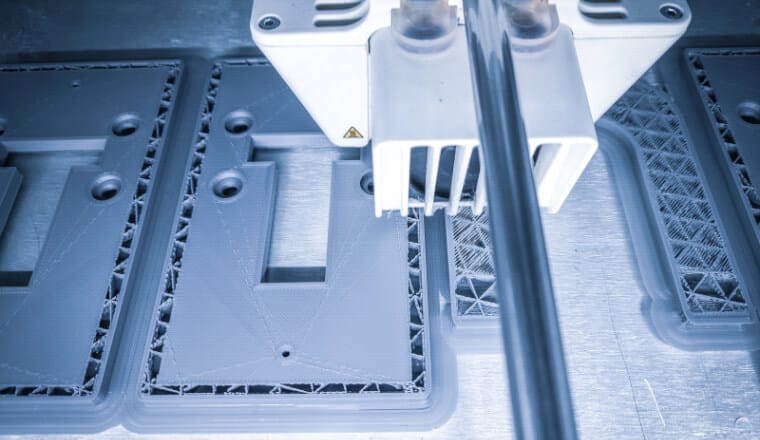Global supply chains are facing increasing challenges, highlighting the need for new approaches to material production. One promising avenue involves developing methods to create high-performance materials from low-quality, variable scrap feedstocks. This initiative focuses on enabling the manufacturing of reliable parts on demand in austere environments, utilizing scrap materials that might otherwise go unused.
Central to this effort is the development of a robust and flexible workflow that integrates feedstock design, adaptive component design, additive manufacturing, and uncertainty quantification (UQ). A project, funded by the Defense Advanced Research Projects Agency (DARPA) of the US Government, has just started to do just that. The proposed system is designed to support point-of-need manufacturing in situations where traditional supply chains are unavailable, while also contributing to more sustainable and circular manufacturing practices.
The Core Approach: Turning Scrap into High-Performance Parts
Picture this: a mobile container system capable of taking in scrap materials of varying quality and transforming them into high-performance parts on-site. This system isn’t just about recycling; it’s about reimagining the entire lifecycle of materials.

Key components of the approach include:
Material Prediction from Composition
Advanced algorithms predict how the composition of scrap feedstocks will affect material properties, ensuring that even contaminated batches can be used effectively.
Digital Part Qualification
Cutting-edge digital tools evaluate and certify parts in real time, eliminating the need for labor-intensive, human-in-the-loop processes.
Additive Manufacturing
Techniques like cold spray and on-site atomization enable the production of parts with precise, high-performance properties, even from low-quality inputs.
The result is a deployable system that brings advanced manufacturing capabilities to the most challenging environments, whether it’s a remote military base or a disaster-stricken region.
Citrine’s Role: Quantifying Uncertainty for Reliable Performance
At the core of this initiative is the ability to manage and predict uncertainty—an essential capability when working with highly variable scrap feedstocks. This is where Citrine Informatics plays a critical role.
Citrine’s uncertainty quantification (UQ) models analyze and propagate uncertainties in material properties across the entire workflow, from the input of scrap materials to the final performance of manufactured parts. By doing so, Citrine provides the insights needed to determine whether a batch of contaminated scrap can still produce usable, high-quality components.
This capability not only ensures reliability but also maximizes the utility of recycled materials, pushing the boundaries of what’s possible in sustainable manufacturing.
A Consortium of Experts: Collaborative Innovation at Its Best
The initiative is powered by a consortium of industry leaders and research pioneers, each contributing their unique expertise to the project and led by Prof. Danielle Cote at WPIt:
- Worcester Polytechnic Institute (WPI): Renowned for its expertise in cold spray and recycling technologies, WPI leads the charge in developing innovative approaches to scrap material utilization.
- VALIS: A key player in scrap analysis, VALIS ensures that feedstocks are thoroughly characterized and optimized for manufacturing processes.
- NightShade/Molyworks: Specialists in on-site atomization, these partners provide the tools to transform scrap into high-quality powders suitable for additive manufacturing.
- Siemens: A global leader in digital design and qualification tools, Siemens brings advanced software capabilities for adaptive component design and certification.
- Solvus: Experts in cold spray technology, Solvus drives the development of cutting-edge additive manufacturing processes.
By combining their technologies and expertise, this team is creating a fully integrated solution that eliminates inefficiencies and human intervention, delivering a streamlined, automated workflow.
From Concept to Commercialization: A Pathway to Real-World Impact
Companies like Citrine, Siemens, and Solvus bring extensive experience in deploying Department of Defense-grade software and hardware solutions. Together, they are paving the way to deliver this innovative technology as a single integrated solution that can be deployed in real-world scenarios. Whether on a battlefield, in disaster recovery zones, or in remote industrial operations, this technology is poised to transform how materials are sourced, manufactured, and certified.
Broader Impact: Sustainability and Accessibility in Manufacturing
The success of this initiative has implications that reach beyond the materials industry. At its core, this project is about democratizing advanced manufacturing and design tools, making them accessible to organizations and industries that rely on recycled materials. This system will lower barriers to entry for using scrap in high-performance applications, opening up new possibilities for industries such as defense, energy, and transportation.
Moreover, the initiative advances sustainable, circular manufacturing practices. By enabling the use of low-quality feedstocks, it reduces waste and minimizes the environmental impact of material sourcing, helping industries transition toward greener operations. In a world increasingly focused on sustainability, this approach supports global efforts to reduce reliance on virgin materials and move toward a more resource-efficient future.

A Vision for the Future
This initiative represents more than just technological innovation—it’s a paradigm shift in how we approach manufacturing in challenging environments. By combining cutting-edge techniques in additive manufacturing, material design, and uncertainty quantification, the team is creating a system that is robust, adaptable, and capable of addressing the most pressing supply chain challenges.
Imagine a world where the availability of high-quality parts is no longer tied to traditional supply chains, but rather to the ingenuity of scientists and engineers working to transform scrap into opportunity. This vision is now closer than ever, thanks to the collaborative efforts of leading institutions and companies pushing the boundaries of what’s possible.

Approved for Public Release, Distribution Unlimited